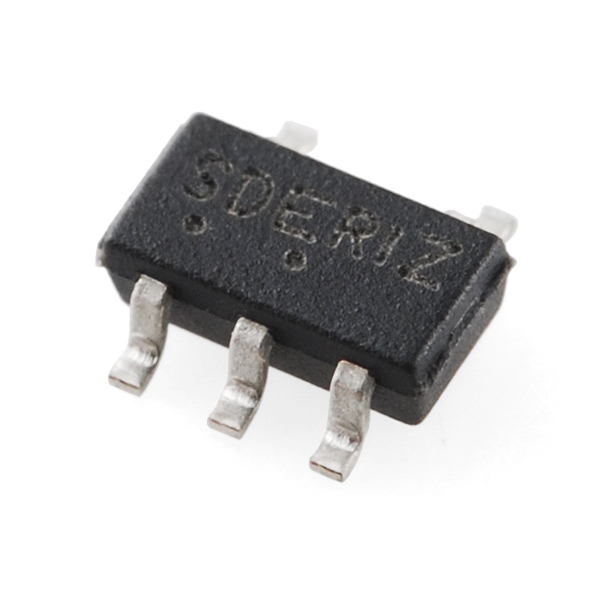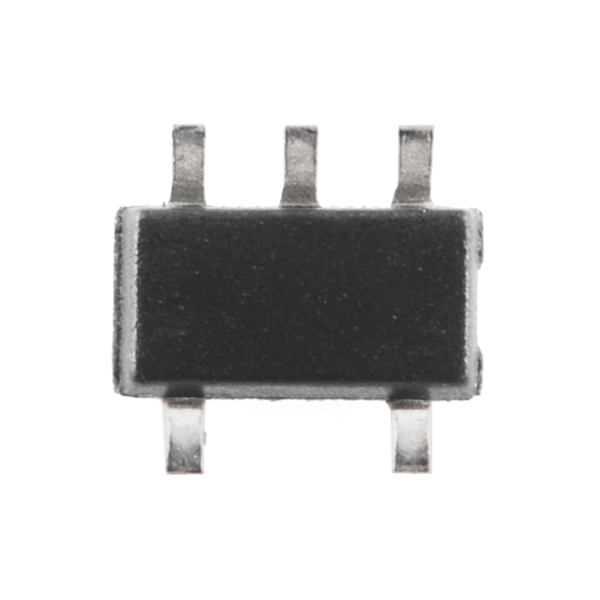Voltage Detector - NCP303
The NCP303 is an ultra−low current voltage detector that contains a programmable time delay generator. These devices are specifically designed for use as reset controllers in portable microprocessor based systems where extended battery life is paramount. It features a highly accurate undervoltage detector with hysteresis and an externally programmable time delay generator. This combination of features prevents erratic system reset operation.
- Quiescent Current of 0.5 uA Typical
- High Accuracy Undervoltage Threshold of 2.0%
- Externally Programmable Time Delay Generator
- Wide Operating Voltage Range of 0.8 V to 10 V
- Complementary or Open Drain Output
- [Datasheet](http://cdn.sparkfun.com/datasheets/Components/General IC/NCP302-D.pdf) (NCP303LSN09T1G)
Voltage Detector - NCP303 Product Help and Resources
Core Skill: Soldering
This skill defines how difficult the soldering is on a particular product. It might be a couple simple solder joints, or require special reflow tools.
Skill Level: Competent - You will encounter surface mount components and basic SMD soldering techniques are required.
See all skill levels
Core Skill: Electrical Prototyping
If it requires power, you need to know how much, what all the pins do, and how to hook it up. You may need to reference datasheets, schematics, and know the ins and outs of electronics.
Skill Level: Competent - You will be required to reference a datasheet or schematic to know how to use a component. Your knowledge of a datasheet will only require basic features like power requirements, pinouts, or communications type. Also, you may need a power supply that?s greater than 12V or more than 1A worth of current.
See all skill levels
Comments
Looking for answers to technical questions?
We welcome your comments and suggestions below. However, if you are looking for solutions to technical questions please see our Technical Assistance page.
Customer Reviews
No reviews yet.





Which threshold voltage does this device have? There are several variants.
I had the same question. It appears that the chip here is open-drain (active low) with a threshold at 0.9V (+/-2%). Hysteresis should be between 0.02V and 0.06V.
oops, cut off the complete model number. check above, it's the NCP303LSN09T1G.
I'm a little confused about the operation of this (specific) component. Does this detect a 0.9V drop, then flag a reset? What if I'm using a 5V micro controller, and the power drops to 4.0/4.1 volts, will the part flag a reset or will it only flag a reset when the supply voltage is 0.9 volts of less? I'm trying to determine how useful this particular product number with 3.3/5.0 uC parts given that it's configured for 0.9 volts.
You can use a resistor voltage divider to scale your supply voltage down to its detection voltage.
Could one of these be used to prevent over discharging of a Lipo cell or pack ?
Probably not too difficult. You'd need a separate switching device (such as a logic level MOSFET) in series with the battery to disconnect it from the load, as well as a resistor voltage divider to scale the battery's voltage threshold down to the 0.9 V threshold of this detector.
You would also need some way for it to latch in the off state. I would first try to simply put the voltage detector distal to the MOSFET so it loses power and can't turn back on. The problem with that is that once it turns off, the MOSFET is undriven and may pass a small current, possibly leading to oscillation (and of course further battery drain). Maybe a bias resistor could work. Or you could put the detector on the proximal side of the MOSFET and short pin 5 to ground so it never charges, but that would consume some (very small, but still there) quiescent current after it's turned off the battery.
No guarantees—test it yourself to be sure.
Is this the voltage detector from the XMOS Development Board?
The new product post said that this part is leftover from a product you no longer build. Does this mean you are not planning on restocking on XMOS?